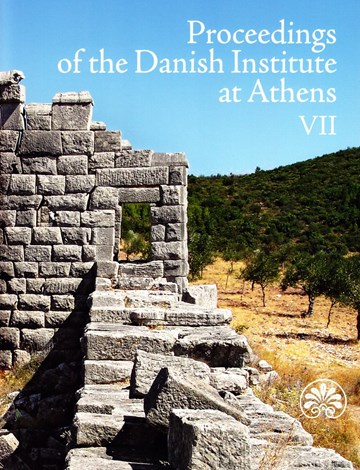The Danish-Greek excavations at Kalydon, Aitolia: the theatre. Preliminary report from the 2011 and 2012 campaigns
Abstract
In the summer of 2011 the Danish–Greek excavations atKalydon entered a new phase with the Ancient Theatre
of Kalydon Project. The project, which is a synergasia
between the 36th Ephorate of Prehistoric and Classical
Antiquities in Mesolonghi and the Danish Institute at
Athens, aims at a total excavation of the theatre of Kalydon
over three campaigns; these will then be published
in monographic form, hopefully by 2015. The campaign
in 2011 lasted for five weeks and the workforce comprised
employees from the Ephorate and the Danish Institute,
together with local workmen and students from five European
universities.
The theatre of Kalydon has been known as a monument
since 1963, when constructions for the highway between
Nafpaktos and Agrinio exposed a series of steps on the
south side of the hill of the sanctuary of Artemis Laphria,
situated south of the city of Kalydon, some 350 m outside
the city walls (Fig. 1). Some soundings were made by Euthymios
Mastrokostas, the archaeologist then responsible for Aitolia, and it was decided that the road should be
constructed some 200 m further south. A brief report was
published in which the theatre was described as a bouleuterion.
A corner of seat-rows were left exposed and the
monument was forgotten about until 2001, when the Danish–
Greek excavations at Kalydon were re-initiated.
Downloads
Published
2014-08-09
How to Cite
Vikatou, O., Frederiksen, R., & Handberg, S. (2014). The Danish-Greek excavations at Kalydon, Aitolia: the theatre. Preliminary report from the 2011 and 2012 campaigns. Proceedings of the Danish Institute at Athens, 7(7), 221–234. Retrieved from https://tidsskrift.dk/pdia/article/view/24141
Issue
Section
Field Reports
License
The authors and Proceedings of the Danish Institute at Athens own the copyright to the published articles and reviews.





